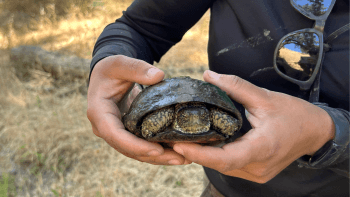2023 Summer Volunteer Recap: The Season of Stinkwort

Over the 2023 summer season, volunteer Land Stewards made fantastic progress on the Open Space Authority's goal to reduce targeted populations of invasive plants throughout our managed lands. Among the many things that require persistent attention in the summertime, is an invasive plant known as stinkwort, one of the most prevalent invasive species in the region.
Stinkwort begins to thrive from late July to September. “Due to the heavy rain in the beginning of the year, the stinkwort was particularly prolific,” says Kat Hill, Volunteer Program Administrator. The efforts of the volunteer Land Stewards the past few months have been primarily focused on this stubborn plant, especially around the Spreckels Hill in Coyote Valley, as well as a smaller property in the Santa Teresa Foothills.
“The volunteers went at it early and often by removing whole plants with hand tools. This reduced their ability to go to seed and further spread into the surrounding areas.”
Overall, volunteers contributed over 150 hours and removed almost half an acre of stinkwort. “We were lucky to have members of the public as well as corporate groups such as Advantest, Starlight Community Services and the Project Management Institute join us in caring for this landscape,” Hill added.

Become a volunteer for the Open Space Authority! Click here to learn more about upcoming volunteer opportunities.



